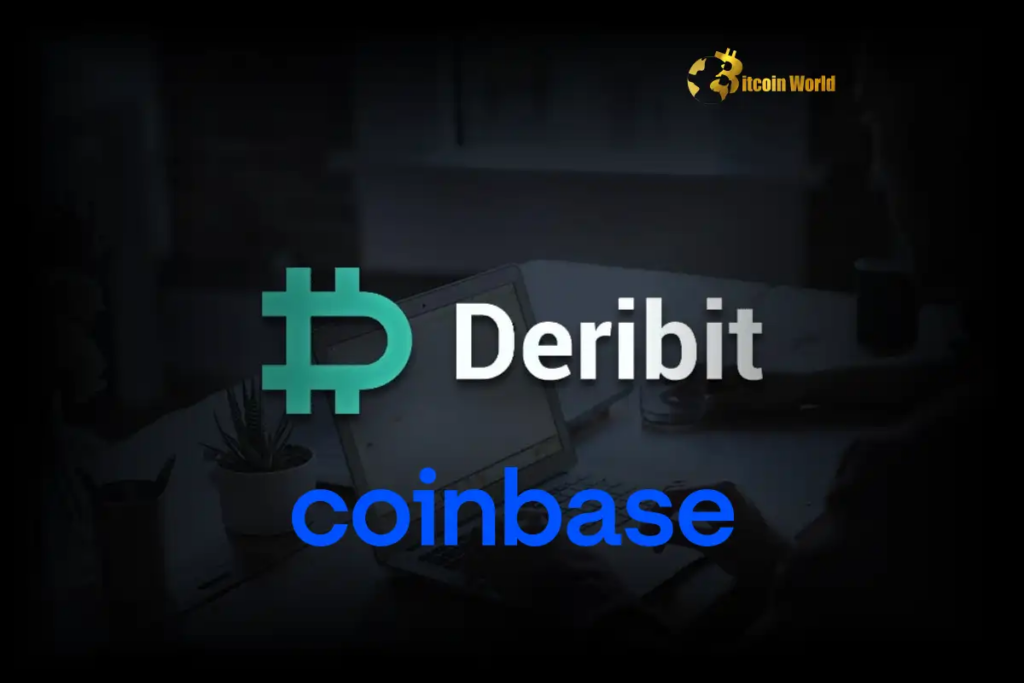Core Information of the Acquisition
On May 8, 2025, Coinbase, the largest cryptocurrency exchange in the U.S., announced a $2.9 billion acquisition of Deribit, the world’s leading Bitcoin and Ethereum options platform. The deal includes $700 million in cash and 11 million shares of Coinbase stock, expected to close by the end of 2025. Deribit currently holds 85% of the global crypto options market, handling over $33 billion in daily trading volume with open interest reaching $30 billion. Upon completion, Coinbase will integrate Deribit’s technology and user base, becoming the first U.S.-compliant exchange to offer spot, futures, and options trading under one roof.

Coinbase’s Strategic Positioning and Industry Background
The core aim of Coinbase’s acquisition is to address its shortcomings in the derivatives market. While Coinbase dominates U.S. spot trading, its derivatives revenue lags behind global platforms like Binance and OKX. Deribit, a “stealth champion” in crypto options, handled $1.2 trillion in trading volume in 2024, with 80% of users comprising institutional clients such as hedge funds and asset managers. With this acquisition, Coinbase gains not only Deribit’s technology and liquidity, but also its VASP license in Dubai, accelerating its expansion into Asia and Europe.
The decision is also closely tied to U.S. policy. Since 2024, the Trump administration’s “Crypto Powerhouse” strategy has encouraged domestic firms to expand their global footprint through acquisitions. As a U.S. compliance leader, Coinbase can bypass strict domestic derivatives regulations through this deal while attracting traditional financial institutions to its platform.
Impact on Market Participants
For retail investors, the integration of Coinbase and Deribit may offer a broader range of trading tools. The companies plan to introduce “portfolio margining,” allowing users to manage risk exposure across spot, futures, and options markets in a unified manner. For example, Bitcoin spot holders can use Deribit’s options contracts for price hedging without transferring assets or opening multiple accounts. In addition, Deribit’s high-frequency trading system (processing 100,000 orders per second) will enhance Coinbase’s execution efficiency, with a target to reduce option order latency to under 5 milliseconds.
Institutional users are more focused on regulatory compliance and liquidity. With Deribit’s addition, Coinbase can provide GAAP-compliant derivatives position reporting to hedge funds and support cross-market arbitrage with CME Bitcoin futures. Internal documents reveal that Goldman Sachs and Morgan Stanley are evaluating access to crypto options trading via Coinbase to avoid legal risks of decentralized platforms.
Potential Challenges and Long-Term Value
Despite optimistic prospects, the integration faces several hurdles.
Technical compatibility is the primary concern: Deribit’s Java-based trading system must integrate with Coinbase’s Go-based architecture, with migration costs possibly exceeding $120 million.
Regulatory approval also poses uncertainty — Dubai’s Virtual Assets Regulatory Authority (VARA) prohibits full foreign control of licensed local entities, potentially requiring Coinbase to retain Deribit’s existing management or restructure equity.
In the long term, the acquisition could redefine crypto financial infrastructure. Coinbase plans to incorporate Deribit’s options data into its Layer 2 network, Base, to develop smart contract-based structured derivatives (e.g., auto-hedging ETF products). Such innovation could attract more traditional financial players and promote Bitcoin as a global risk-hedging asset akin to gold.
Retail users can flexibly allocate assets via JuCoin spot trading to respond to opportunities and risks from the derivatives market.
The Next Phase of the Crypto Market
Coinbase’s acquisition of Deribit marks a pivotal shift in the crypto industry from “wild growth” to “institutional and complex evolution.” As Deribit CEO Luuk Strijers stated, “When options and spot markets are deeply integrated, crypto becomes a real tool in the global financial system.” This transaction not only offers investors more efficient risk management tools but also lays the groundwork for the maturity of Web3 financial infrastructure. In the future, competition in the crypto derivatives market will shift from trading volume to innovation, compliance, and cross-ecosystem synergy.





